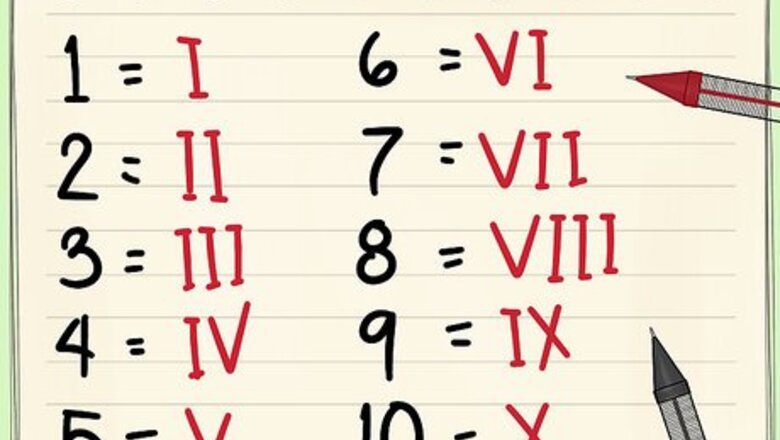
views
X
Research source
Surely everyone knows that I is 1, II is 2, and III is 3, but do they know that V is 5, or that X is 10? If you don't know that and the numbers that follow, and would like to know, read on! It will definitely help you when looking at copyright dates of books published in MCMXXXIV (1934) or to understand that the book on the Statue of Liberty bears a label MDCCLXXVI (1776)!
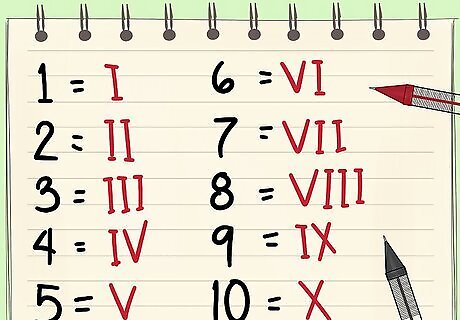
Understand the concept of Roman numerals. Roman numerals use fewer symbols than the number system you are used to. I is the number 1 (one), V is 5 (five), and X is 10 (ten), for example. Counting starts out as easy as I (one), II (two), III (three). But for the next one, write IV for "one away from five" (I away from V), which is four. This pattern continues with V (five), VI (five + one = six), VII (seven), VIII (eight), then IX ("one away from ten" = nine), X (ten). This may sound confusing, but you'll get the hang of it, Take a look at Roman numerals from 1 to 20:I II III IV V VI VII VIII IX X XI XII XIII XIV XV XVI XVII XVIII XIX XX
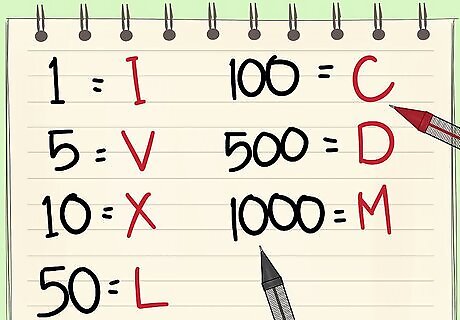
Learn the values. As you may know, the Roman numbering system is based on letters rather than a whole new alphabet for numbers. I 1 V 5 X 10 L 50 C 100 D 500 M 1000
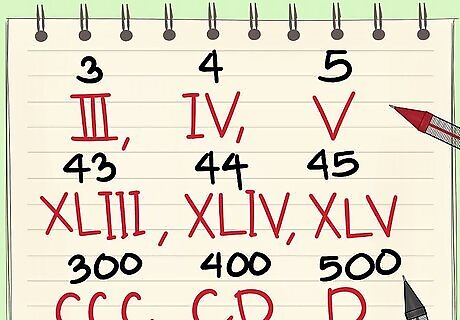
Put them together. The concept in step 1 is actually quite basic. That pattern repeats continuously throughout the system, no matter how great a number may be. For example: From 40 to 50:XL XLI XLII XLIII XLIV XLV XLVI XLVIII XLIX L From 100 to 110:C CI CII CIII CIV CV CVI CVII CVIII CIX CX By hundreds, from 100 to 1000:C CC CCC CD D DC DCC DCCC CM M

Learn the special rules for 4000 and above. There is no character representing 5000, so there are 3 ways to do this. The Romans themselves just wrote MMMM for 4000. To be faster, write the Roman numeral value for 4 in parentheses like so: (IV) Finally, a bar could be drawn above the number rather than putting the number in parentheses.
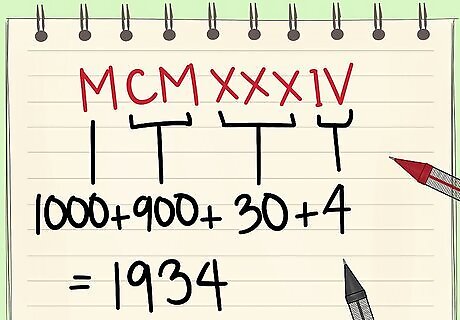
Understand how to break up a number to read it. After understanding how the individual numbers are written, it is easy to understand how MCMXXXIV (used as an example in the introduction) means 1934. To get MCMXXXIV, simply add: MCM (1900) + XXX (30) + IV (4). To get MDCCLXXVI (1776), simply add: MDCC (1700) + LXX (70) + VI (6).



















Comments
0 comment